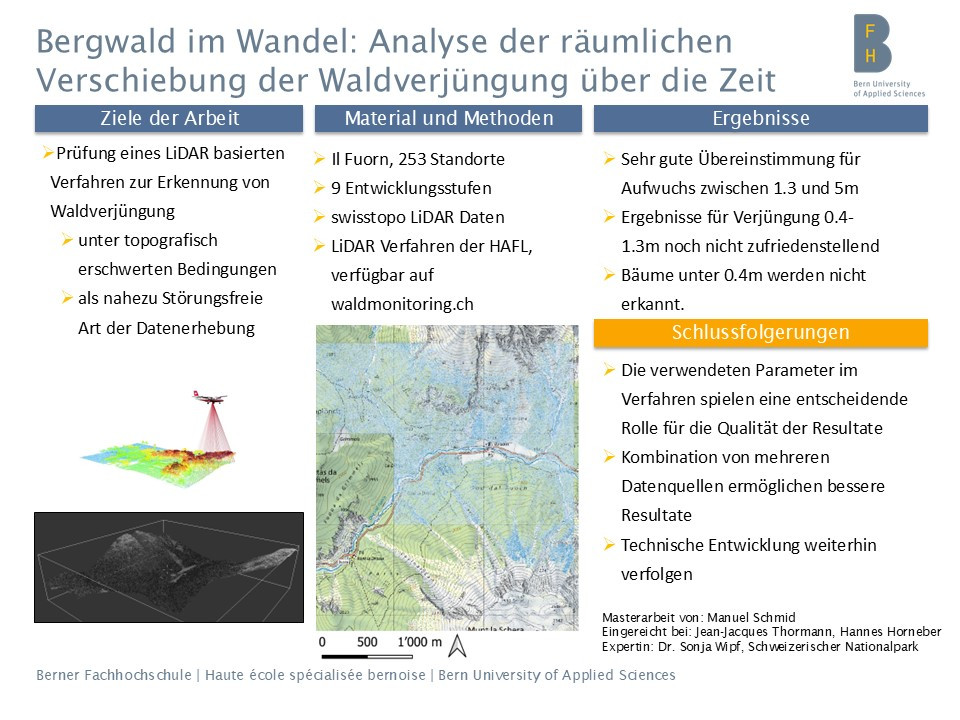Shorter winters and rising temperatures are altering vegetation conditions in mountain regions, significantly impacting natural forest regeneration. This regeneration is crucial for the adaptability of mountain forests. To better understand these natural processes, further research is essential. Remote sensing, particularly Light Detection and Ranging (LiDAR), has proven to be an efficient and reliable method for forest measurement. HAFL has introduced a LiDAR-based method for detecting forest regeneration, developed and tested in mixed deciduous forests on the Central Plateau.
This paper presents a case study investigating whether climatic changes over the past 20 years have caused a spatial shift in natural forest regeneration. Additionally, it examines the applicability of the HAFL method in quantifying regeneration in mountain forests. Field data from 2003, 2012 and 2022 on regeneration and browsing in the Il Fuorn area of the Swiss National Park (SNP) were analyzed. Topographic factors such as altitude, slope gradient, and exposure were tested as potential drivers of regeneration using Generalized Linear Mixed-Effects Models (GLMM). The study explored interactions between these topographic factors and survey years to determine any spatial shifts over time. The LiDAR-based HAFL method was applied to the study area with various parameterizations, and the results were statistically compared with the field data.
The findings indicate that while the survey year is a significant positive driver for forest regeneration in most models, a spatial shift over time is observed only for mountain pine regeneration, which has moved upslope. The LiDAR method performs well for detecting regeneration between 1.3 and 5 meters but is less accurate for regeneration <1.3 meters. No reliable results were obtained for regeneration <1.3 meters.
The time factor significantly influences the probability of forest regeneration for all tree species except spruce, with an overall increase in sites with existing regeneration over time. Due to the varying spatial distributions of the analyzed tree species, cross-species statements are not feasible. Only pine regeneration has shown a spatial shift, moving upslope. With parameter adjustments to local conditions, the HAFL LiDAR-based method yields good results for regeneration between 1.3 and 5 meters. For detecting regeneration <1.3 meters, it is advisable to supplement LiDAR data with other sources and explore alternative methods.
Quiz question
Für welche Baumhöhe erzielt die HAFL-Methode verlässliche Ergebnisse bei der Erkennung der Verjüngung?
Bäume von 1.3 bis 5 m
Bäume kleiner 1.3 m
Bäume grösser 5 m
